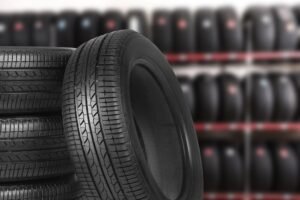
Prototype sampling, short production runs, and frequent design changes make low-volume injection molded parts especially challenging. At the same time, small plastic components for industries like electronics and medical devices require extremely tight tolerances and precision molding. This combination makes choosing the right injection molding supplier in China critical.
This guide covers tips for sourcing high-precision, low-volume injection molded parts from qualified manufacturers in China. We’ll review how to assess capabilities for low-volume molding, precision process control, rapid prototyping, and other needs to ensure high-quality outcomes for your small-batch plastic components.
For small batch production, PlasticMoulds.net provides injection molding services for low quantities. When high accuracy is needed, their precision molding processes deliver quality results.
Key Capabilities for Low-Volume, High-Precision Injection Molding
Look for these core competencies when selecting a low-volume injection molding partner in China:
Expertise in Precision plastic Molding
Scrutinize process capabilities to ensure consistently high precision, even at low volumes. Precision molding equipment, validated methods, metrology software, and climate-controlled facilities are essential.
Ask about tolerance capabilities down to ±0.005mm or lower. Review their detailed process controls and qualification data. Ensure they select optimal injection molding machines, molds, and automation levels to achieve precision targets economically at low volumes.
Capacity for Rapid Prototyping
Rapid prototyping minimizes lead times for design verification and tooling adjustments during pre-production. Look for in-house facilities for fast prototyping processes like CNC machining, 3D printing, and silicones molding.
Quick turnaround for prototype tweaks prevents delays during pilot runs and ramp-up to full production. Clarify typical timeframes for their prototyping services.
Flexible, Low-Volume Production Setups
Dedicated low-volume manufacturing cells are ideal for smaller batch sizes. These agile cells have smaller injection molding machines and streamlined workflows to improve changeover efficiency and part quality at lower volumes.
Alternatively, some facilities use rotary platen machines or multi-cavity tools to run various materials in low volumes cost-effectively. Inspect their production floor and ask about dedicated small-batch cells.
Advanced Metrology and Quality Control
Precision molding requires robust process monitoring and quality inspection, especially for critical dimensions and tolerances on small plastic parts. Ensure quality engineers perform detailed first-article inspections and document full measurement reports.
They should use advanced measuring tools like optical and multisensor CMMs, profile projectors, microscopes, etc. to verify precision on both pre-production and production parts.
responsive customer service
Low-volume injection molding requires extensive communication and quick resolution of issues that arise during prototyping, tooling adjustments, sampling, and ramp-up. Ensure your supplier provides responsive, bilingual customer service to prevent delays.
Best Practices for Sourcing Low-Volume Precision Molding
Follow these tips for streamlining RFQs and effectively managing projects:
Provide Detail on Critical Specifications
Be very clear about critical dimensions, geometric tolerances, surface finishes, flash limits, and other precision requirements. Provide tolerance zones on drawings and highlight crucial specification callouts.
Request Mold Design Recommendations
Experienced suppliers will suggest mold and gate designs to optimize precision molding for your particular plastic parts. Adopting their design advice can improve outcomes.
Start with Shorter Prototype Runs
Keep initial prototype batch sizes small (50-100pcs) to allow quicker design adjustments before committing to longer pilot production runs.
Schedule On-Site Process Reviews
Witnessing process verifications and quality checks on-site gives you greater visibility and confidence. Time factory visits to coincide with key milestones like first-article inspection.
Define Testing Expectations
Clarify all part performance, durability, and functional tests you expect the supplier to conduct. Statistically verify capabilities using gage R&R.
Use 3D Models for Design Reviews
Use digital model comparisons to review plastic part samples and communicate any design change requests. This prevents misinterpretations.
Plan for Multiple Tooling Revisions
Factor additional tooling cycles into your project timeline and budget to account for likely mold adjustments during initial sampling.
Finding the Right Low-Volume Injection Molding Partner in China
From rapid prototyping to precision process validations to responsive customer support, low-volume injection molding requires robust capabilities and specialized expertise. But finding the right partner in China can deliver high-quality outcomes and accelerated speed to market. Focus your search on manufacturers with proven precision molding competencies, flexible low-volume production, advanced metrology, and excellent project management. With meticulous planning and clear specifications, your Chinese supplier can exceed expectations for even the most challenging low-quantity plastic components.






